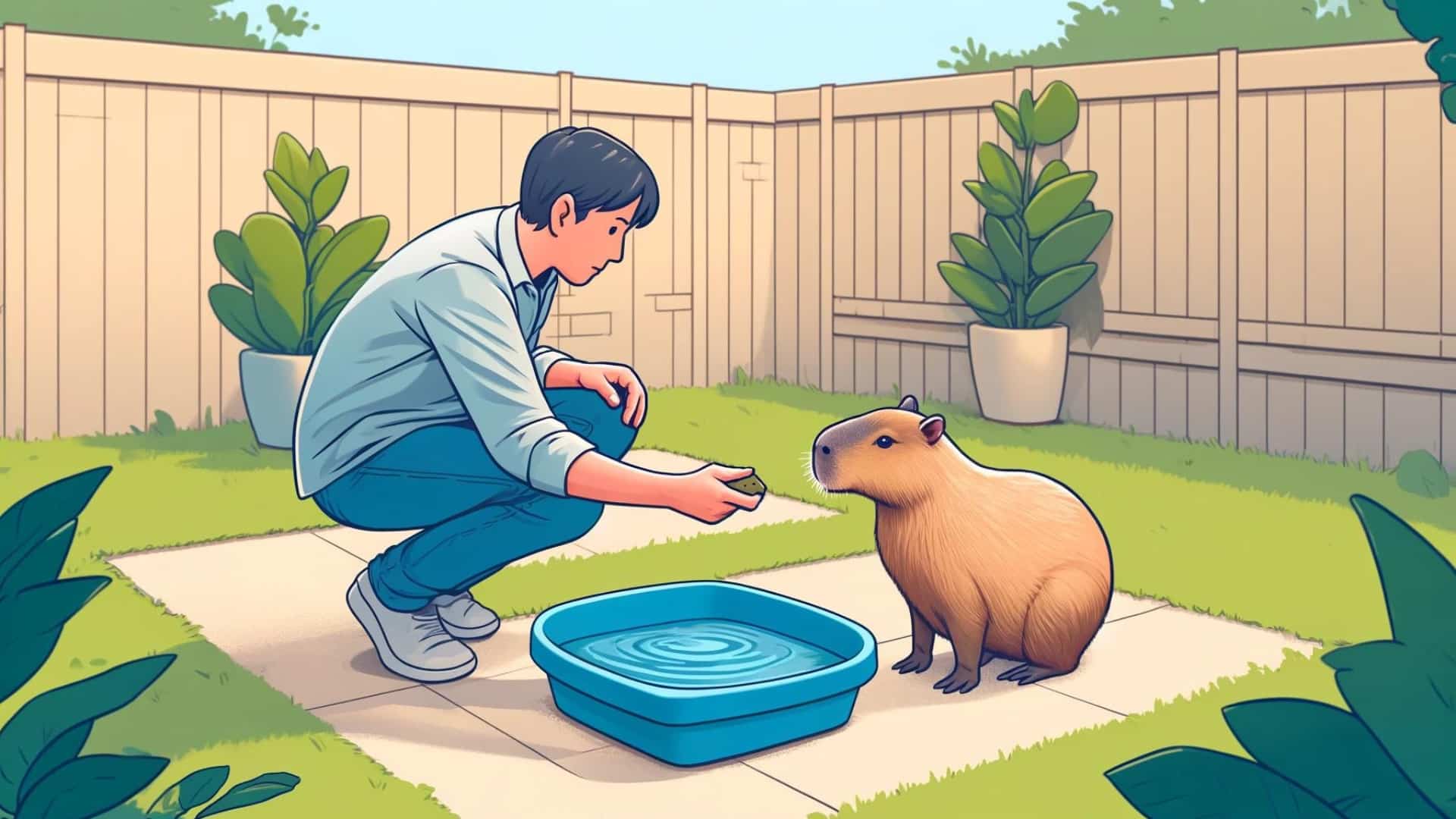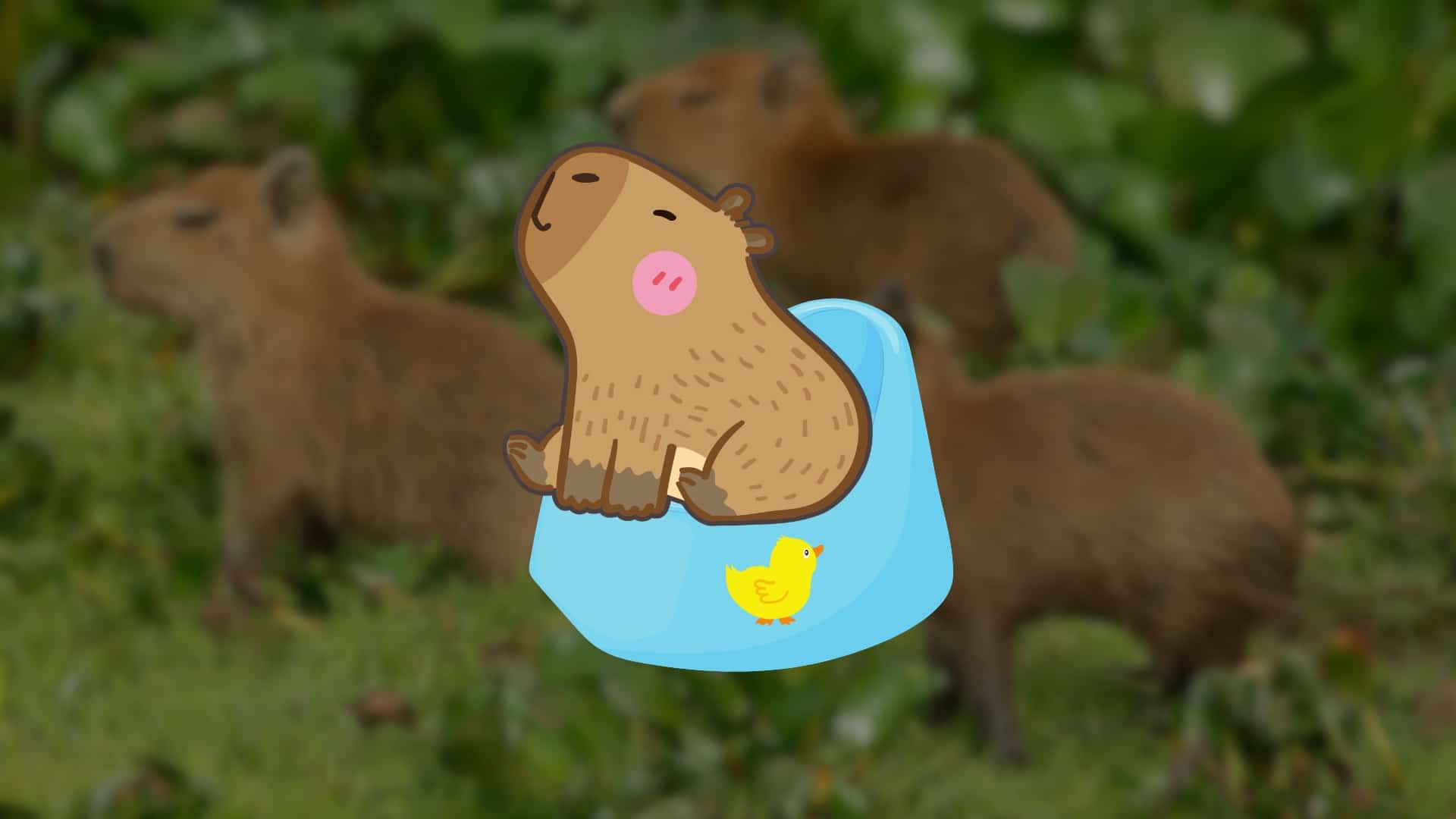Ah, you’re wading into the marshy waters of capybara behavior! Capybaras, being the chillest rodents in the pool, can indeed be somewhat potty trained, but it’s a bit different than training your average pupper. These semi-aquatic critters naturally prefer to do their business in water, so mimicking this environment can help in the training process. That being said, training a capybara to always go in a specific spot can be a bit like trying to herd ducks – possible, but requiring patience and consistency. Remember, they’re still wild animals at heart, not domesticated pets, so their habits can be a bit more free-flowing.
Potty Training: A Feasible Task?

The journey to potty training a capybara begins with understanding their natural instincts. These creatures have a tendency to defecate in water, a behavior that is instinctual and tied to their wild habits. This aspect makes potty training capybaras different from domesticated pets like dogs and cats. However, with patience and the right techniques, it is possible to teach these adorable giants to use a designated bathroom area.
Since they prefer to do their business in water, it’s important to understand their wild habits. Speaking of natural behaviors, Capybaras eating habits are quite unique!
Success Stories and Techniques
Dannella, an author at Buy Capybara, provides extensive guidance on potty training capybaras based on personal experiences and research. By observing her capybaras’ natural bathroom habits and creating a consistent routine aligned with those patterns, she was able to guide her pets to use a specific toileting area. Her approach emphasized patience and the use of positive reinforcement methods like treats and verbal praise.
Positive reinforcement plays a crucial role in training capybaras. Rewards such as treats or praise when they use the designated area can significantly reinforce the desired behavior. Consistency is critical – maintaining a regular schedule and routine helps the capybara learn faster. As you learn about training capybaras at home, you might also be curious about the legal requirements for owning one in California.
The Younger, The Better

Like most animals, younger capybaras are more adaptable and learn quicker compared to adults. Starting the training process early increases the chances of success. However, this doesn’t rule out the possibility of training an adult capybara; it just might require more patience and persistence.
The Reality of Potty Training Capybaras
While there are success stories, it’s important to note that not all capybaras will be fully potty trained. Their wild nature and inherent habits can make complete house training a challenge. Accidents might happen, and it’s crucial for owners to be prepared for this possibility. Potty training is just one aspect of caring for a capybara. Understanding their diet is equally crucial. If you want to know more about what capybaras eat, their eating habits can provide valuable insights into their care.
Creating the Right Environment
Apart from training, providing an environment that suits their natural behavior is essential. This includes access to a water body or a large enough pool where they can indulge in their natural habits. Their living space should be safe, comfortable, and aligned with their instincts after all, these are animals with some clever ways to outsmart predators.
Capybara Poop Size
Capybara droppings, those little grassy bundles, are usually about the size of a large grape or a small prune. Pretty manageable, even in capy-terms! These herbivore heroes munch on grass and water plants, so their pellets are mostly fiber. Capybara droppings aren’t cube-shaped, they’re more like little fibrous pellets. It’s the Australian wombat that has the honor of producing cube-shaped poop, a real quirk in the animal kingdom! These cube poops are quite the bushland conversation piece. Wombats use them to mark territory and attract mates, and the cube shape helps prevent them from rolling away. Nature’s got some wacky designs, huh?
Why do Capybara Eat their Own Poop
Capybaras, like some other herbivores, practice coprophagy, which means they eat their own poop. Sounds gnarly, but there’s a good reason! Their first round of poop contains a lot of nutrients that haven’t been fully digested yet, especially from tough plant materials. By eating it a second time, they make sure to absorb all the nutrients, vitamins, and minerals. It’s like getting the most out of their salad buffet!
The Reality and Joy of Capybara Potty Training
While not all capybaras may fully adapt to household potty habits, the success stories of owners like Marvin, Elizabeth, and Dannella prove that with the right approach, it is indeed possible. It’s a journey that requires patience, understanding, and a deep appreciation of the capybara’s natural behaviors.
Potty training a capybara is a realistic goal for dedicated owners. The process requires an understanding of the animal’s natural instincts and a commitment to gentle, consistent training methods. Through patience and perseverance, a strong and rewarding bond can be formed, making the experience of owning a capybara even more fulfilling.



